PT Male Branch Tee — One-Touch Pneumatic Male Branch Tee Fitting for Compressed-Air Systems
Product overview: The PT Male Branch Tee is a one-touch pneumatic male branch tee fitting engineered for fast, tool-free tube connections in compressed-air installations. Featuring a push-in tube interface for rapid assembly and a PC-type body with hex inner/outer surfaces for compact-space piping, this fitting is available in metric (4 mm–16 mm) and inch (5/32″–1/2″) tube sizes and multiple thread options (PT/BSPT and NPT). Threaded ports come pre-applied with a seal coating to simplify assembly and promote leak-free joints.
Introduction
Pneumatic distribution in automated machinery, assembly lines, and plant utilities demands robust, quick-to-service fittings that minimize downtime and leak risk. The PT Male Branch Tee addresses these needs by combining the speed of push-to-connect technology with the durability and sealing reliability of threaded male connections. Its one-touch push-fit interface reduces assembly time to seconds per connection, while the compact PC-type body offers hex flats to assist installation in constrained spaces.
This article provides a comprehensive technical review of the PT Male Branch Tee targeted at engineers, maintenance personnel, system integrators, and procurement specialists. It explains the product’s operating characteristics, specifications, materials, installation and maintenance best practices, and comparative advantages relative to alternative branch tee solutions.
Technical Overview
The PT Male Branch Tee is a three-port pneumatic branch fitting where two ports are aligned inline (run) and the third port is a male-threaded branch (male branch). It incorporates a push-to-connect (one-touch) collet and release sleeve for the tubing branch and threaded male connection for integration into manifolds or other threaded ports.
Key operational attributes:
- One-touch tube connection: Tubing is inserted until it seats against the internal stop; removal is accomplished by pressing the sleeve and pulling the tube free, enabling assembly or replacement in 1–2 seconds without tools.
- Threaded male port with pre-applied seal coating: Male thread comes with factory-applied sealant to improve first-assembly sealing performance and reduce the need for additional tape or liquid sealants.
- PC-type body with hex flats: Polycarbonate (PC) body variants include hex-shaped inner and outer surfaces enabling wrench access and compact-space tightening.
- Wide tube size and thread compatibility: Available in metric tube sizes 4, 6, 8, 10, 12, 16 mm and inch tube sizes 5/32″, 3/16″, 1/8″, 1/4″, 3/8″, 1/2″. Thread options include PT (BSPT/R) and NPT variants for global compatibility.
- Intended fluid: Compressed air only.
Operating ranges (typical): 0–150 PSI (0–9.9 kgf/cm²; approx. 0–990 kPa). Allowable vacuum to -29.5 in Hg (-750 mm Hg, approx. 10 Torr). Ambient and fluid temperature range: 32–140°F (0–60°C).
Functional Components
- Body: PC-type (polycarbonate) or engineered resin body in some variants. Provides mechanical strength and dimensional stability.
- Collet: Stainless steel or plated spring steel collet with molded retention teeth to grip tubing.
- Release sleeve: POM (polyoxymethylene) or PC sleeve that actuates the collet for tube release.
- Seal ring: Elastomeric O-ring (commonly NBR) providing a static seal between tube and fitting.
- Male thread insert: Metal (often brass or plated steel) or molded reinforced thread with pre-applied sealant.
Specifications and Dimensions
The following tables summarize typical technical attributes and dimensional data for common PT Male Branch Tee models. These values are representative; always confirm final dimensions and weights with the manufacturer’s official datasheet before design integration.
General Operating Specifications
| Attribute | Specification |
|---|---|
| Intended fluid | Compressed air only |
| Operating pressure | 0–150 PSI (0–9.9 kgf/cm²; ~0–990 kPa) |
| Allowable vacuum | Down to -29.5 in Hg (-750 mm Hg; ~10 Torr) |
| Temperature range (ambient & fluid) | 32–140°F (0–60°C) |
| Tubing material compatibility | Polyurethane (PU), Nylon (PA), Soft PVC; consult manufacturer for other materials |
| Thread types | PT (BSPT / R) and NPT variants |
Representative Dimensional Table — Metric Tube Series
| Model Code | Tube O.D. | Male Thread | A (Overall Length) | B (Run Width) | C (Thread Length) | D (Hex Width) | Weight |
|---|---|---|---|---|---|---|---|
| PC04-1/8 | 4 mm | 1/8″ PT | 28 mm | 20 mm | 8 mm | 11 mm | 8 g |
| PC06-1/8 | 6 mm | 1/8″ PT | 30 mm | 22 mm | 8 mm | 11 mm | 10 g |
| PC08-1/4 | 8 mm | 1/4″ PT | 34 mm | 26 mm | 9 mm | 14 mm | 14 g |
| PC10-1/4 | 10 mm | 1/4″ PT | 36 mm | 28 mm | 9 mm | 14 mm | 18 g |
| PC12-3/8 | 12 mm | 3/8″ PT | 40 mm | 30 mm | 10 mm | 18 mm | 28 g |
| PC16-1/2 | 16 mm | 1/2″ PT | 46 mm | 36 mm | 11 mm | 22 mm | 45 g |
Representative Dimensional Table — Inch Tube Series
| Model Code | Tube O.D. | Male Thread | A (Overall Length) | B (Run Width) | C (Thread Length) | D (Hex Width) | Weight |
|---|---|---|---|---|---|---|---|
| PCT5-1/8 | 5/32″ | 1/8″ NPT | 28 mm | 20 mm | 8 mm | 11 mm | 9 g |
| PCT6-1/8 | 3/16″ | 1/8″ NPT | 30 mm | 22 mm | 8 mm | 11 mm | 11 g |
| PCT8-1/4 | 1/4″ | 1/4″ NPT | 34 mm | 26 mm | 9 mm | 14 mm | 15 g |
| PCT10-3/8 | 3/8″ | 3/8″ NPT | 40 mm | 30 mm | 10 mm | 18 mm | 30 g |
| PCT12-1/2 | 1/2″ | 1/2″ NPT | 46 mm | 36 mm | 11 mm | 22 mm | 48 g |
Note: Dimensional values are typical nominal measurements. Final product dimensions and weights are model-specific and should be verified on the manufacturer’s dimensional drawing prior to system design.
Materials and Build Quality
Material selection for pneumatic fittings balances mechanical strength, chemical resistance, temperature stability, and manufacturability. The PT Male Branch Tee integrates materials chosen to optimize long-term reliability in compressed-air environments.
Primary Materials
- Body (PC-type): Polycarbonate (PC) is used for the PC variants of the PT series. PC provides high impact resistance, dimensional stability under mechanical loads, and the ability to mold precise hex flats for wrenching in confined spaces. For higher mechanical or thread strength, some variants may incorporate brass inserts or metal-reinforced thread zones.
- Collet and Retainer: Stainless steel or phosphor-bronze spring steel collet provides robust gripping of tubing and corrosion resistance. Teeth profile is optimized to permit multiple insertions/removals while maintaining grip strength.
- Release Sleeve: POM (acetal) or reinforced polyamide (nylon) for low-friction actuation and good wear resistance.
- Seals (O-rings): Nitrile rubber (NBR) is common for compressed-air applications due to its resistance to oils and air, good sealing under the specified temperature range, and cost effectiveness. For higher temperature or oil-laden air, FKM (Viton) variants may be available.
- Thread Insert/Seat: Brass or plated steel for the male thread in some models, especially where higher mechanical torque is expected. In plastic-bodied models, threads may be molded or reinforced with metal inserts and factory-applied sealant.
Manufacturing and Quality Control
High-volume production uses injection molding for polymer components and precision stamping/assembly for metal inserts and collets. Quality control checkpoints typically include:
- Dimensional inspection of critical features (collet bore, O-ring groove, thread geometry).
- Functional verification of push-fit retention force and release behavior.
- Leak testing at pressure (often to 1.5× rated working pressure, per internal procedures) to ensure sealing at the threaded and tube interfaces.
- Batch traceability and corrosion resistance checks for metal components.
For installations that demand cleanroom compatibility, some manufacturers provide cleaned and packaged versions to reduce particulate contamination.
Key Features
The PT Male Branch Tee contains a number of design features that support rapid assembly, reliable sealing, and serviceability. These include:
- One-touch push-in connection: Tool-free, fast insertion with positive audible/ tactile feedback when tube seats.
- Tool-free release: Depress the sleeve and pull to remove tubing; ideal for systems requiring periodic reconfiguration or maintenance.
- Pre-applied thread seal coating: Threaded male port is factory-coated with a compatible sealant, reducing the need for additional tape or liquid sealants and ensuring consistent sealing performance.
- PC-type hex flats: Hex-shaped inner/outer surfaces facilitate wrenching in compact areas, minimizing the space required for tightening access.
- Wide size range: Supports metric and inch tube sizes allowing global standardization.
- High-pressure capability: Rated up to 150 PSI with built-in O-ring sealing and robust collet grip.
- Vacuum suitability: Can withstand substantial vacuum down to -29.5 in Hg for negative-pressure applications.
- Compact footprint: Short face-to-face dimensions facilitate installation in tight manifolds and compact assemblies.
- Material variants: Options for different elastomer seals (NBR, FKM) and reinforced thread inserts for elevated mechanical requirements.
Use Cases and Applications
PT Male Branch Tees are applicable wherever compressed-air branches need to be taken from a distribution main or manifold with minimal assembly time and easy field servicing. Common application categories include:
Industrial Automation
- Branching supply lines to cylinder valves, grippers, and air logic components.
- Rapid reconfiguration of pneumatic tooling in assembly stations where cycle downtime must be minimized.
- Interfacing between manifolds and tubing runs in modular equipment.
Machine Tooling and Handling
- Integration into compact machine frames where hex flats are necessary to tighten fittings within restricted access regions.
- Supply points for pneumatic blow-off or vacuum generation devices where vacuum rating is required.
Packaging and Material Handling
- Connections to vacuum cups, air lines to sensors, and actuators in packaging equipment that require frequent servicing.
- Quick-disconnect functionality for rapid line changes between product runs.
Laboratory and R&D Test Stands
- Prototyping and benchtop test setups where flexibility and rapid reconfiguration save time during iterative testing.
Mobile and Field Equipment
- Portable pneumatic tools and mobile diagnostic carts that require secure connections and fast disassembly.
In all use cases, it is essential to adhere to the product’s intended fluid (compressed air only) and temperature/pressure ratings. Avoid exposure to oxygen, flammable gases, or liquids unless the manufacturer explicitly certifies compatibility.
Comparison with Alternative Branch Tee Fittings
Below is a comparative table contrasting the PT Male Branch Tee with three common alternatives: brass compression branch tees, barbed tees with hose clamps, and bulkhead threaded tees.
| Feature | PT Male Branch Tee (Push-to-connect) | Brass Compression Branch Tee | Barbed Tee with Hose Clamp | Bulkhead Threaded Tee |
|---|---|---|---|---|
| Assembly Speed | Very fast (one-touch); tool-free insertion | Moderate; requires wrench for nut compression | Slow to moderate; requires hose clamps and positioning | Slow; requires thread sealing and tightening |
| Serviceability | High; simple release for tube change | Moderate; can be disassembled but nuts may seize | Low; hose clamps can be time-consuming to remove/replace | Moderate; requires tools, potential for rework |
| Leak Resistance | High (O-ring + factory sealant) | High if properly tightened | Lower; depends on clamp torque and hose condition | High if properly sealed |
| Compactness | Very compact; PC-type hex aids tight installs | Less compact; nuts and bodies bulkier | Depends on hose routing; can be bulky | Bulkier due to nut/washer/housing |
| Cost (per unit) | Moderate | Moderate–high | Low | Moderate–high |
| Best Use | Quick-change lines, compact manifolds | High-pressure or critical static joints | Simple low-cost setups | Panel or bulkhead-mounted distributions |
Overall, the PT Male Branch Tee is optimized for applications where speed, compactness, and repeatable serviceability are primary considerations. For permanent, high-pressure, or harsh-environment installations, a metal compression or threaded solution may be preferred.
Benefits and Limitations
Benefits
- Rapid assembly and service: The push-fit interface reduces labor costs and downtime during installation and maintenance cycles.
- Compact design: Short overall length and hex flats make the fitting suitable for tight equipment enclosures and manifold clusters.
- Consistent sealing: Factory-applied thread seal coating reduces human error and improves first-assembly sealing reliability.
- Vacuum compatibility: Rated for substantial negative pressure, allowing broader application beyond positive-pressure uses.
- Material flexibility: Seal and body material variants enable tailored choices for oil exposure or elevated temperatures (where applicable).
- Global thread support: PT/BSPT and NPT options simplify integration with localized piping standards.
Limitations
- Fluid restriction: Intended for compressed air only—do not use with oxygen, fuels, or other gases/liquids unless validated by the manufacturer.
- Temperature limits: Standard elastomer seals (NBR) limit use within 0–60°C; higher temperatures require FKM seals or special variants.
- Repeated disassembly wear: While designed for multiple insertions, elastomer seals and collet teeth degrade over many cycles and should be inspected periodically.
- Mechanical torque limits: The plastic body variants have torque limitations on threaded connections; over-tightening may distort threads or compromise sealing.
- Contamination sensitivity: Push-to-connect fittings depend on clean tubing ends; particulate or burrs on tubes can prevent proper sealing.
Installation and Maintenance Guide
Proper installation and ongoing maintenance are essential to ensure the long service life and leak-free performance of PT Male Branch Tees. The following sections provide best-practice steps and troubleshooting guidance.
Installation — Recommended Procedure
- Inspect components: Confirm the fitting model, thread type, and tube compatibility. Check the body, release sleeve, and visible seals for damage before installation.
- Prepare tubing: Cut tubing squarely using a suitable tube cutter. Remove burrs and chamfer the tube end slightly if necessary to facilitate insertion. Ensure the tube O.D. matches the specified size for the fitting.
- Check insertion depth: Note the manufacturer-specified insertion depth (typically 10–15 mm depending on tube size). Insert the tube until it seats with an audible click and tactile stop.
- Tighten male thread: Engage the male thread into the mating port. For fittings with pre-applied seal coating, tighten until hand-tight plus a prescribed fraction of a turn or to the manufacturer’s recommended torque. If no torque is specified, tighten to a snug fit using a wrench on the hex flats—avoid excessive torque to prevent thread or body damage. (See suggested torque guidance below.)
- Leak test: After pressurizing the system to operating pressure, perform a bubble test or ultrasonic/pressure decay leak test to verify sealing integrity. Check both tube connection and threaded port.
- Record and tag: For critical systems, note fitting model and installation date in maintenance logs for traceability.
Suggested Assembly Torque (Guidance)
Torque recommendations are dependent on the thread type and whether the body includes a metal insert. If the manufacturer specifies torque limits, always follow those. The following are conservative guidance ranges for typical small pneumatic male threads:
| Thread | Suggested Torque Range (Nm) | Notes |
|---|---|---|
| 1/8″ PT/NPT | 3–6 Nm | Small threads; tighten gently to avoid strip. |
| 1/4″ PT/NPT | 6–10 Nm | Moderate torque; use hex flats to control turns. |
| 3/8″ PT/NPT | 10–18 Nm | Higher torque; metal insert recommended for high torque. |
| 1/2″ PT/NPT | 15–25 Nm | Use combination of wrench and backup support. |
Important: These torque ranges are conservative generalizations. Consult the manufacturer’s datasheet for precise torque values for a given model and frequency of assembly.
Routine Maintenance
- Periodic leak checks: Perform visual and auditory inspections routinely and pressure-decay tests quarterly or as dictated by process criticality.
- Inspect seals and collets: During scheduled maintenance, depress the release sleeve and remove tubing to inspect collet teeth and O-rings for wear or debris. Replace the fitting if damage is observed.
- Clean tubing ends: Contaminants on tubing can cause leaks; clean or re-cut tubes before re-insertion.
- Avoid excessive cycling: While push-fit fittings are designed for multiple reconnections, excessive cycles (hundreds) will reduce retention force—track frequency and replace proactively.
- Protect from harsh chemicals: Do not expose the fitting body or seals to solvents or cleaning agents that degrade the materials; store replacement parts in protected packaging.
Troubleshooting Checklist
- Leak at tube connection: Check that the tube is fully inserted to the stop; remove and reinsert. Inspect the tubing end for burrs or flattening. Replace O-ring or fitting if necessary.
- Leak at threaded connection: Verify mating threads and confirm thread engagement. If the pre-applied seal coating is insufficient, remove the fitting, clean mating surfaces, and reapply PTFE tape or approved sealant before reassembly.
- Difficulty removing tube: Ensure the release sleeve is fully depressed; twist the tube slightly while pulling to break the grip. If the tube is swollen from heat or chemical exposure, replace both tube and fitting.
- Loss of retention force: After many cycles, replace the fitting as the collet teeth or internal spring may be fatigued.
Design and Selection Considerations
When specifying PT Male Branch Tees for a system, consider the following technical points to ensure optimal performance and lifetime:
- Tube material and O.D. tolerance: Ensure chosen tubes maintain dimensional tolerance within the range required for reliable gripping; soft or undersized tubing can leak or be pushed out under pressure.
- System pressure and safety margin: Apply a safety factor when selecting materials—if transient pressure spikes exist, verify the fitting’s burst/maximum pressure performance with the manufacturer.
- Thread standard compatibility: Confirm whether mating ports require PT/BSPT or NPT threads; thread mismatch can result in cross-threading and leaks.
- Environmental exposure: If exposed to oils, solvents, elevated temperatures, or UV, choose compatible seal materials (e.g., FKM) and UV-stable body materials or metal-threaded variants.
- Cycle frequency: For components subject to frequent disconnections, plan a maintenance replacement interval to avoid in-service failures.
- Cleanliness requirements: For application in instrument air or packaging of food-grade goods, request cleaned/packaged variants or alternative fittings certified for that use.
Regulatory and Safety Notes
Observe the following safety guidelines when integrating PT Male Branch Tees:
- These fittings are manufactured for compressed air only. Do not use for oxygen service, flammable gases, or liquid media unless explicitly certified.
- Ensure proper machine guarding and pressure-relief devices in high-pressure systems to mitigate the risk of sudden line disconnections causing whip or component ejection.
- Follow lockout-tagout (LOTO) procedures before performing maintenance or disassembly on pressurized pneumatic systems.
- If the assembly will be used in regulated industries (medical, food, pharmaceutical), verify material compliance with applicable standards and request appropriate declarations (e.g., FDA, EU food contact) where necessary.
Case Study — Example Application
Scenario: A high-mix automotive assembly cell requires frequent tooling change-outs. Pneumatic gripper supply lines must be disconnected and reconnected several times per shift during tool swaps.
Solution: Using PT Male Branch Tees on the gripper supply manifold allowed technicians to rapidly remove and replace tubing without tools. The compact PC-type body fit within the tight tooling fixtures, and the pre-applied thread sealant on the manifold ports reduced rework from initially leaky threaded joints. Maintenance tracked insertion cycles and replaced fittings after the manufacturer-recommended service life. Result: Average tool-change elapsed time reduced by 40%, and leak-related air losses decreased significantly.
Conclusion
The PT Male Branch Tee is a purpose-built solution for modern compressed-air distribution systems where speed, repeatability, and compact installation are priorities. Its one-touch push-in tube interface significantly reduces assembly time and simplifies maintenance, while PC-type hex surfaces and pre-applied thread sealing streamline installation in constrained spaces. With a broad range of tube sizes and thread variants, the PT series is adaptable to global pneumatic standards.
Engineers specifying PT Male Branch Tees should pay careful attention to tube material compatibility, temperature and pressure limits, and the torque constraints for plastic-bodied variants. When correctly selected and installed, PT Male Branch Tees are a high-value component that improves system uptime, reduces leak potential, and simplifies routine service operations.
Appendix: Quick Reference Checklist
- Intended fluid: compressed air only
- Operating pressure: 0–150 PSI (0–9.9 kgf/cm²; ~0–990 kPa)
- Vacuum compatibility: down to -29.5 in Hg (-750 mm Hg)
- Temperature range: 32–140°F (0–60°C)
- Tube sizes: Metric 4–16 mm; Inch 5/32″–1/2″
- Thread options: PT (BSPT/R) and NPT variants
- Installation: Cut tube square, insert to stop, tighten male thread per recommended practice, leak test after pressurization
If you require model selection assistance, custom seal materials, or installation torque values for a specific PT Male Branch Tee model, contact the manufacturer or supplier with application details (pressure profile, fluid composition, temperature, and tube material) to obtain the precise datasheet and engineering support.

 Tiếng Việt
Tiếng Việt

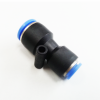
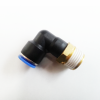
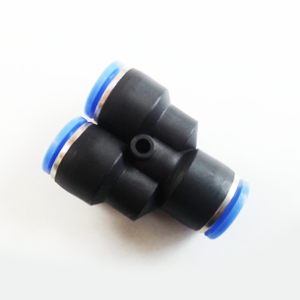
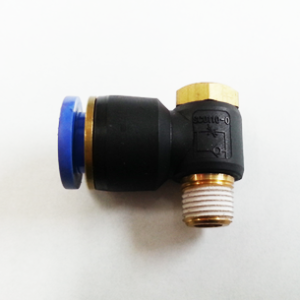
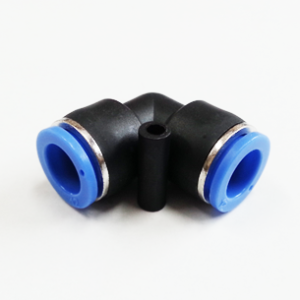

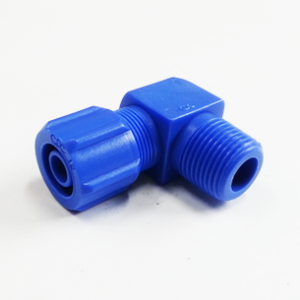
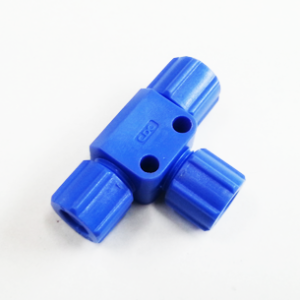
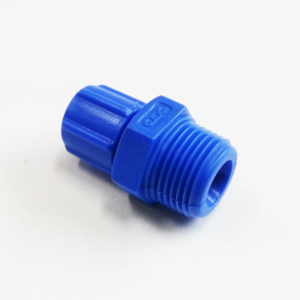
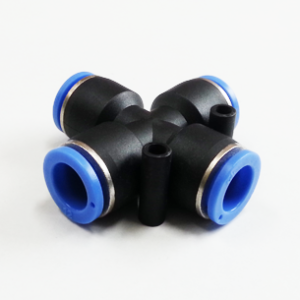
Reviews
There are no reviews yet.